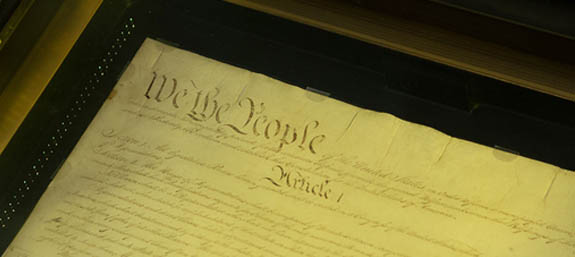WHAT IS A COPYRIGHT?
Copyright protects an original work of authorship that is fixed in a tangible medium of expression. The term “original work of authorship” requires the work to demonstrate a minimal amount of creativity. If the work meets the required amount of originality, then its creator is the “author.” As such, one cannot be an author unless she has independently originated something new. A work is “fixed in a tangible medium” when it is attached in a relatively stable and permanent embodiment such that the work can be perceived, reproduced, or communicated for more than a short time. The term “expression” indicates that ideas are not protected by copyright law; instead, it is the fixed expression of those ideas in a tangible form that is protectable.
THE FOLLOWING WORKS OF AUTHORSHIP ARE PROTECTABLE BY THE COPYRIGHT LAW
- Literary works;
- Musical works, including any accompanying words;
- Dramatic works, including any accompanying music;
- Pantomimes and choreographic works;
- Pictorial, graphic, and sculptural works;
- Motion pictures and other audiovisual works;
- Sound recordings;
- Architectural works;
These categories are not mutually exclusive, so a work can fall into multiple categories.
Copyright protection does not extend to any idea, procedure, process, system, method of operation, concept, principle, or discovery.


WHAT ARE COPYRIGHT RIGHTS AND WHAT IS THE LEGAL BASIS FOR COPYRIGHTS?
Copyright law is a creature of statute with a basis in the U.S. Constitution. The legal basis for copyrights was written into Article I, Section 8, Clause 8 of the U.S. Constitution:
“The Congress shall have the power . . . To promote the Progress of Science and useful Arts, by securing for a limited Times to Authors and Inventors the exclusive Right to their respective Writings and Discoveries.”
The copyright statutes are provided by the federal Copyright Act of 1976, as amended, and set forth a comprehensive set of rules for governing the various aspects of copyright law, including: the subject matter and scope of copyright; copyright ownership and transfer; copyright term; copyright notice, deposit, and registration; copyright infringement and remedies; and the operations of the Copyright Office.
The Copyright laws define an author’s exclusive rights in her copyrighted works, including the right:
- To reproduce the copyrighted work in copies or phonorecords;
- To prepare derivative works based on the copyrighted work;
- To distribute copies or phonorecords of the copyrighted work to the public by sale or other transfer of ownership, or by rental, lease, or lending;
- In the case of literary, musical, dramatic, and choreographic works, pantomimes, and motion pictures and other audiovisual works, to perform the copyrighted work publicly;
- In the case of literary, musical, dramatic, and choreographic works, pantomimes, and pictorial, graphic, or sculptural works, including the individual images of a motion picture or other audiovisual work, to display the copyrighted work publicly;
- In the case of sound recordings, to perform the copyrighted work publicly by means of a digital audio transmission;
Additional rights related to author attribution and the integrity of the work, including the right:
- To claim authorship of a work;
- To prevent the use of her name as the author of any work of visual art which she did not create;
- To prevent the use of her name as the author of the work of visual art in the event of a distortion, mutilation, or other modification of the work which would be prejudicial to her honor or reputation;
- To prevent any intentional distortion, mutilation, or other modification of the work which would be prejudicial to her honor or reputation;
- To prevent any intentional or grossly negligent destruction of a work of recognized stature.
WHO REGISTERS COPYRIGHTS?
Copyright protection in the United States exists automatically from the moment the original work of authorship is fixed. In other words, “[a]n author gains ‘exclusive rights’ in her work immediately upon the work’s creation, including the rights of reproduction, distribution, and display.”
So why would one need to register a copyrighted work and where does that happen?


Copyright registration is required before a copyright owner can sue another party for copyright infringement. And “registration” as used in copyright law refers to certain acts of the United States Copyright Office, such as reviewing and registering the copyright (as opposed to the registrant filing the required application and materials with the Copyright Office). Although a copyright owner must wait for a certificate of registration for her work before filing a cause of action in court, the copyright owner can recover for infringement that occurred both before and after registration.
Copyright registration also benefits the public by providing a registry where parties that may be interested in licensing a copyrighted work can find the ownership information for a particular work.